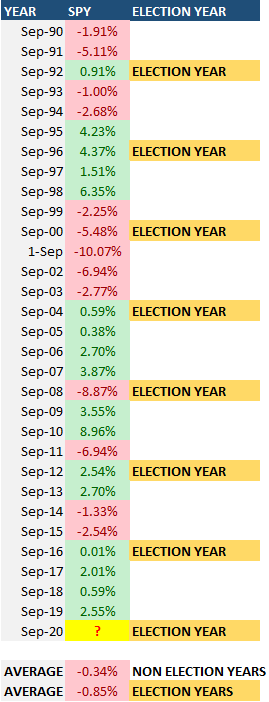
Election Trade
Let the mudslinging begin! ‘Tis the season for internet memes and social media slanders.
I can’t wait!
Media companies wrote the election playbook: be loud, be scandalous, and tease tantalizing headlines. Their job is to get eyeballs and clicks to show their paying advertisers their products and services will be seen by many!
We like to call the news “infotainment.” If you’re not entertained, you’re not watching. If you’re not watching, you’re not buying the products and services advertised to you. If you’re not buying, advertisers will stop paying the networks.
That’s how the news works… it’s free for you to consume- but more on that after this pause for a word from our generous sponsor…
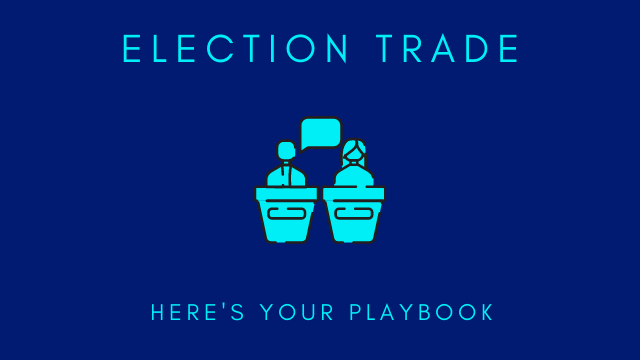
As a market watcher, you mustn’t let the news media circus distract you from what’s important: Big Money has a pronounced election trade.
Presidential elections are full of drama, distraction, and misdirection. We see prime examples on the debate stage. Candidates have mastered the art of skewing facts and data to support their narrative. With the November 3rd election fast approaching, countless soundbites will be played as the media clamors for your attention.
These distractions can hurt unsavvy investors. Uncertainty such as an election stokes fear which invariably leads to snap decisions to sell and lock in loss.
Here at MAPsignals, we realized long ago that emotion has no place in managing a portfolio. While most investors focus on how the outcome of the election impacts their portfolio, we believe that the focus should be elsewhere: the unemotional data.
We say: focus on big money.
Big Money means professional investors: sovereign wealth funds, pensions funds, hedge funds, and other large investment entities. They have huge resources, big budgets, and thousands of man/woman-hours at their disposal. Their entire reason for being is to make money from investments. They will use these vast resources to act upon investment ideas or sidestep risk of loss.
Just like a poker player will not show the rest of the table his or her cards, it is in the best interest of Big Money to act quietly and not tip their hand.
That’s why we say: don’t focus on the outcome of the election, but what happens before.
For every election since 1990, we’ve observed that Big Money investors tend to sell stocks before and leading up to election day. They buy stocks afterwards. Through the lens of data, historically speaking, the eventual victor doesn’t matter at all.
But before we dive deeper into the election trade, let’s review the current jittery market.
Big Money Selling Slowly Increases
Volatility is rising while the Big Money Index is falling. Anecdotally, we believe lots of day-traders are getting margin calls. We actually received a notice from our broker this week, that due to increased uncertainty, they are adjusting downward their leverage ratio.
That means the broker, too, sees risk ahead and is choking off credit. As we stated last week, day-traders are the weak hands and they will face more pressure as leverage ratios tighten into the election.
As for the BMI- it is at a level not seen since late April:
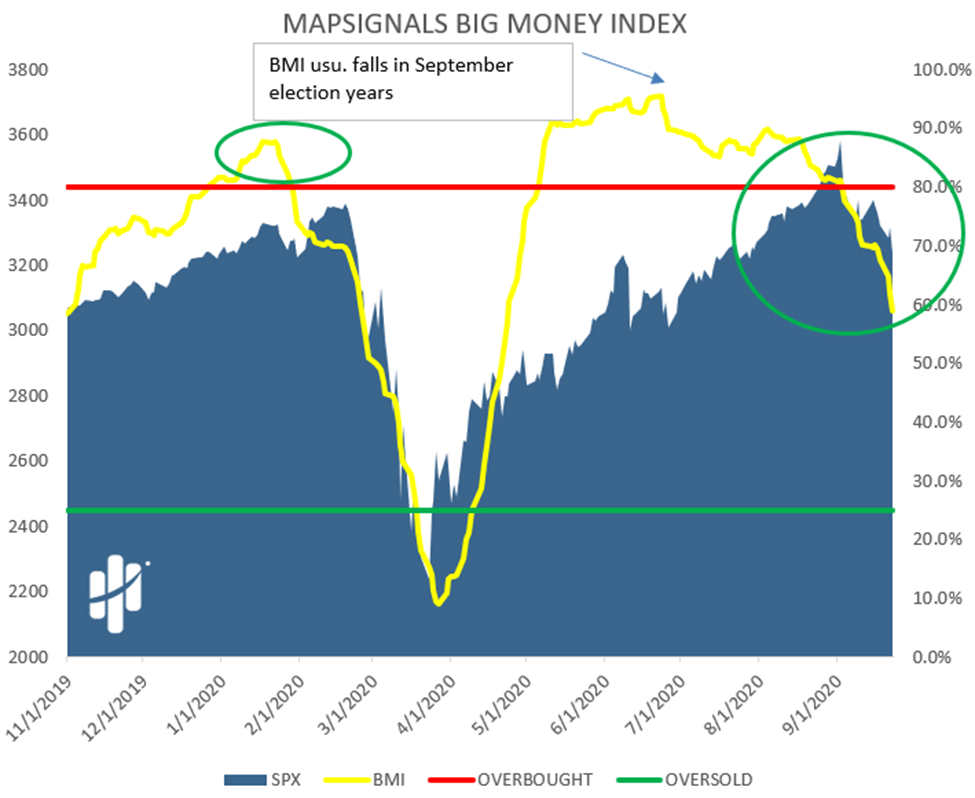
History taught us to be on the right side of the BMI. Like mama goose, where she goes, the goslings follow… in other words: the market usually follows the BMI. It’s been a one-way elevator going down.
We look below at the daily Big Money Stock Signals to see why. Green bars mean net buyers won the day. Red bars show net sellers.
Clearly, we see that selling has started to increase.
Intuitively, this puts downward pressure on the BMI:
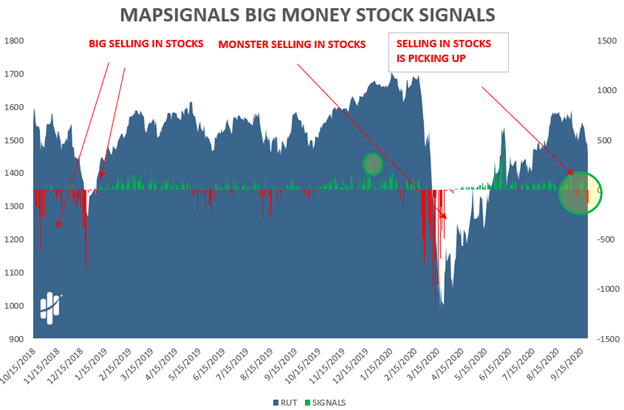
One might ask: “are we out of the woods yet?”
The answer is “no.” While sector leadership rotates out of Technology, we need to see a general demand for stocks increase before a market floor can be set. As long as selling prevails, we choose to be on the right side of the BMI.
“But can’t buyers possibly show up tomorrow?”
Maybe. But, looking back at prior election years, what we see currently looks eerily similar. And that causes us to again say: “no.”
There appears to be a recurring election trade every four years.
Election Trade Says Weakness Is Ahead
You’ve likely heard that September is a weak month for markets. That is true. Going back to 1990, the S&P 500 has an average return of -.34% for the month of September.
Digging deeper, isolating only every fourth election year September since 1990, those returned -.85% excluding the current September.
September 2020 is continuing and even amplifying that negative trend. Month-to-date performance for the S&P 500 (SPY ETF) sits at an unsettling -7.26%.
But don’t panic, because the BMI has you covered. It’s time to tee up the election trade playbook.
Look at the pattern the BMI follows in the last seven election cycles.
Our current election-year September falls perfectly in-line with our observations of prior elections starting in 1992.
Here’s how the election trade works simply: Big money sells stocks into election day and buys stocks shortly after.
Following are the examples. The blue line is election day. Notice how the BMI tends to fall into election day and rises after.
Here’s 2016:
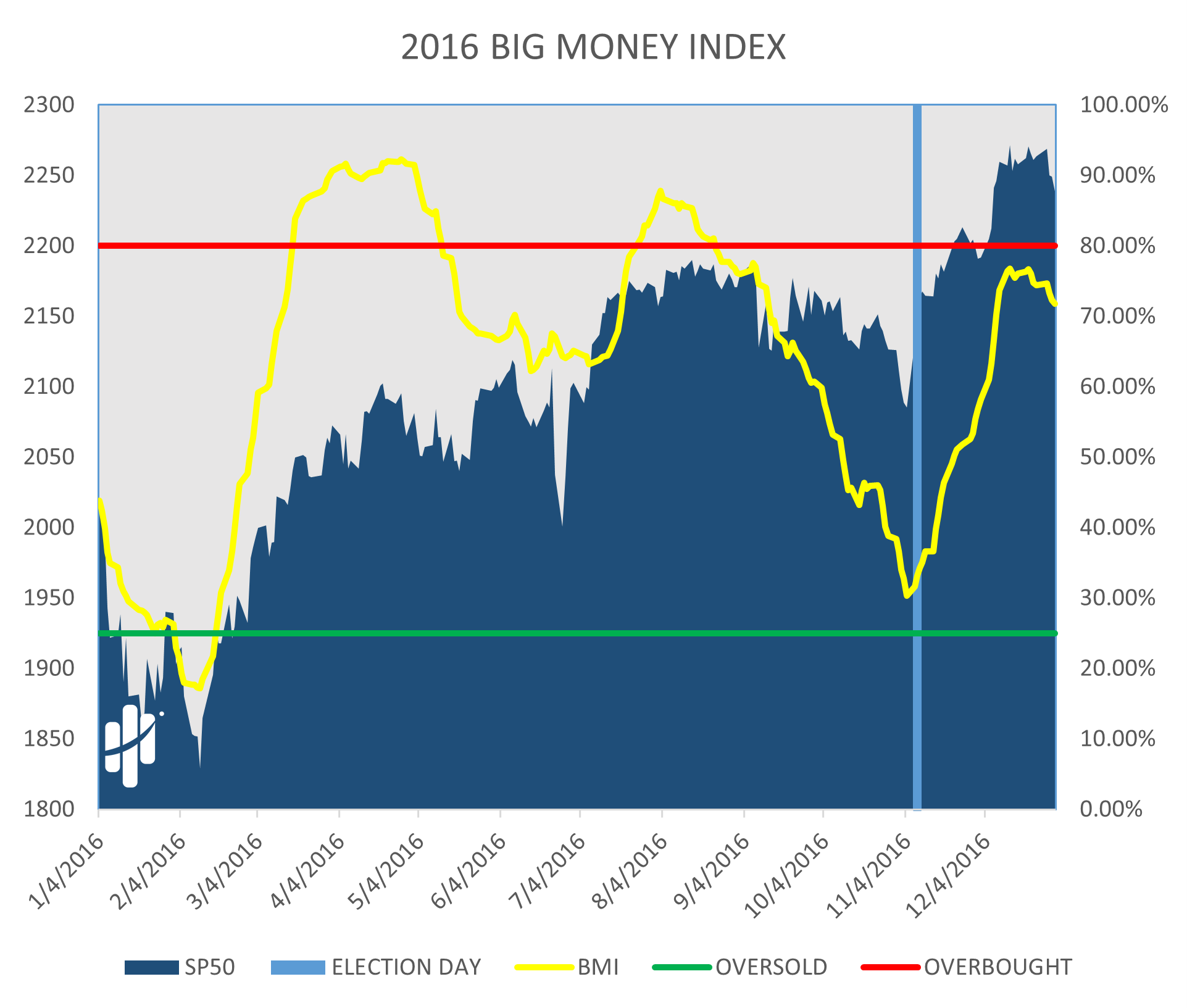
Now, 2012:
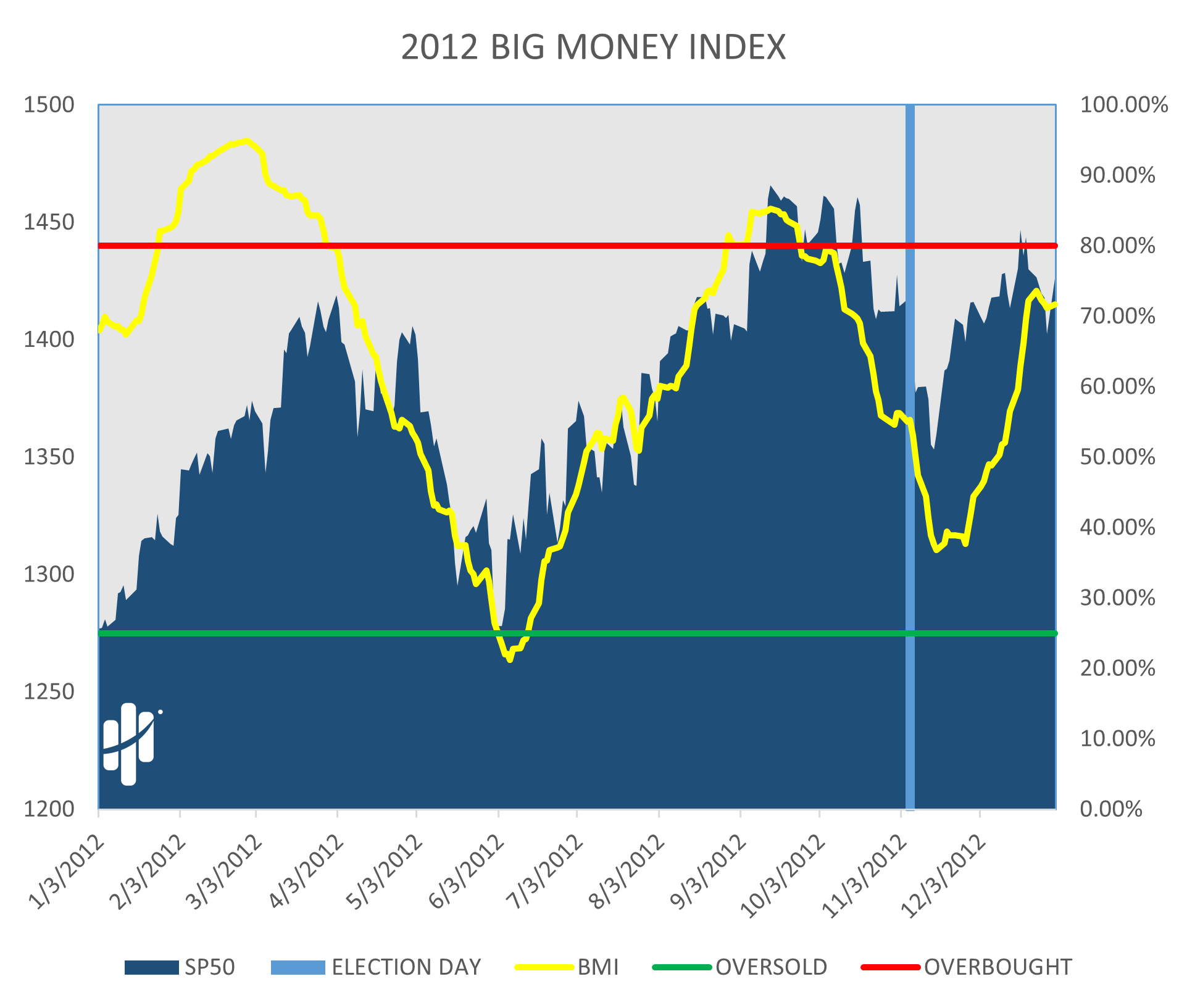
And even 2008:
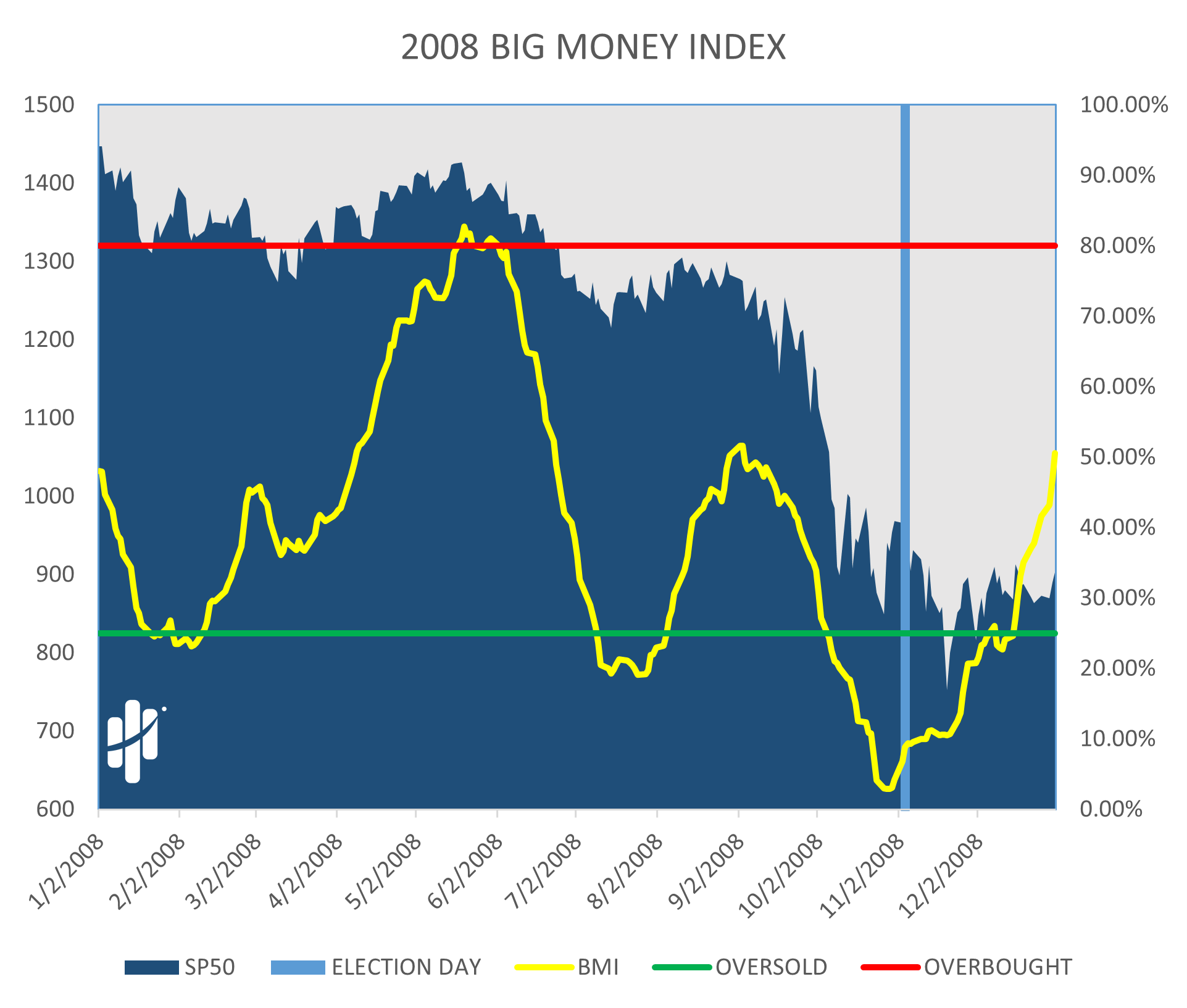
So far, there clearly seems to be an election trend. Let’s continue…
2004:
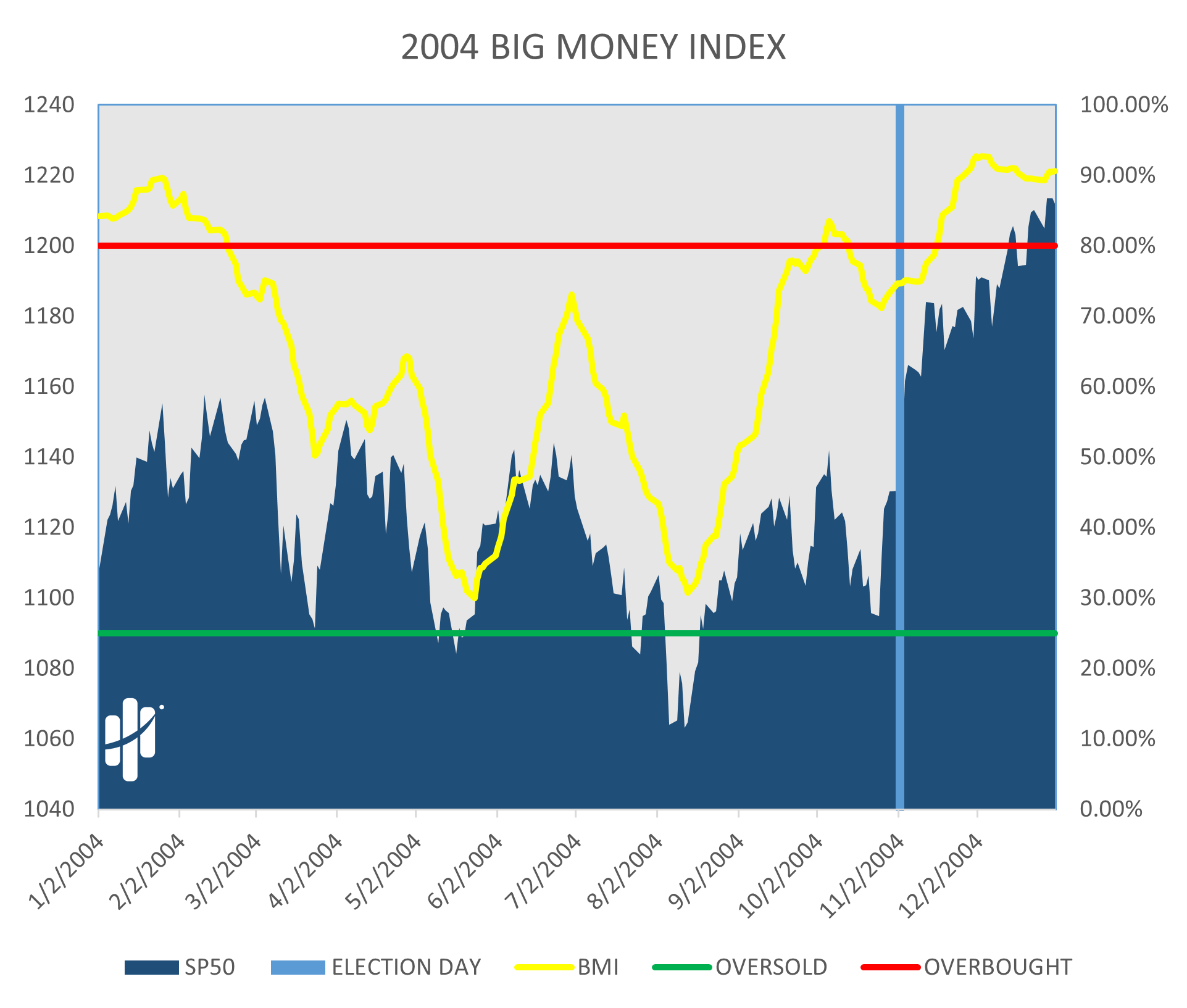
And 2000:

1996:
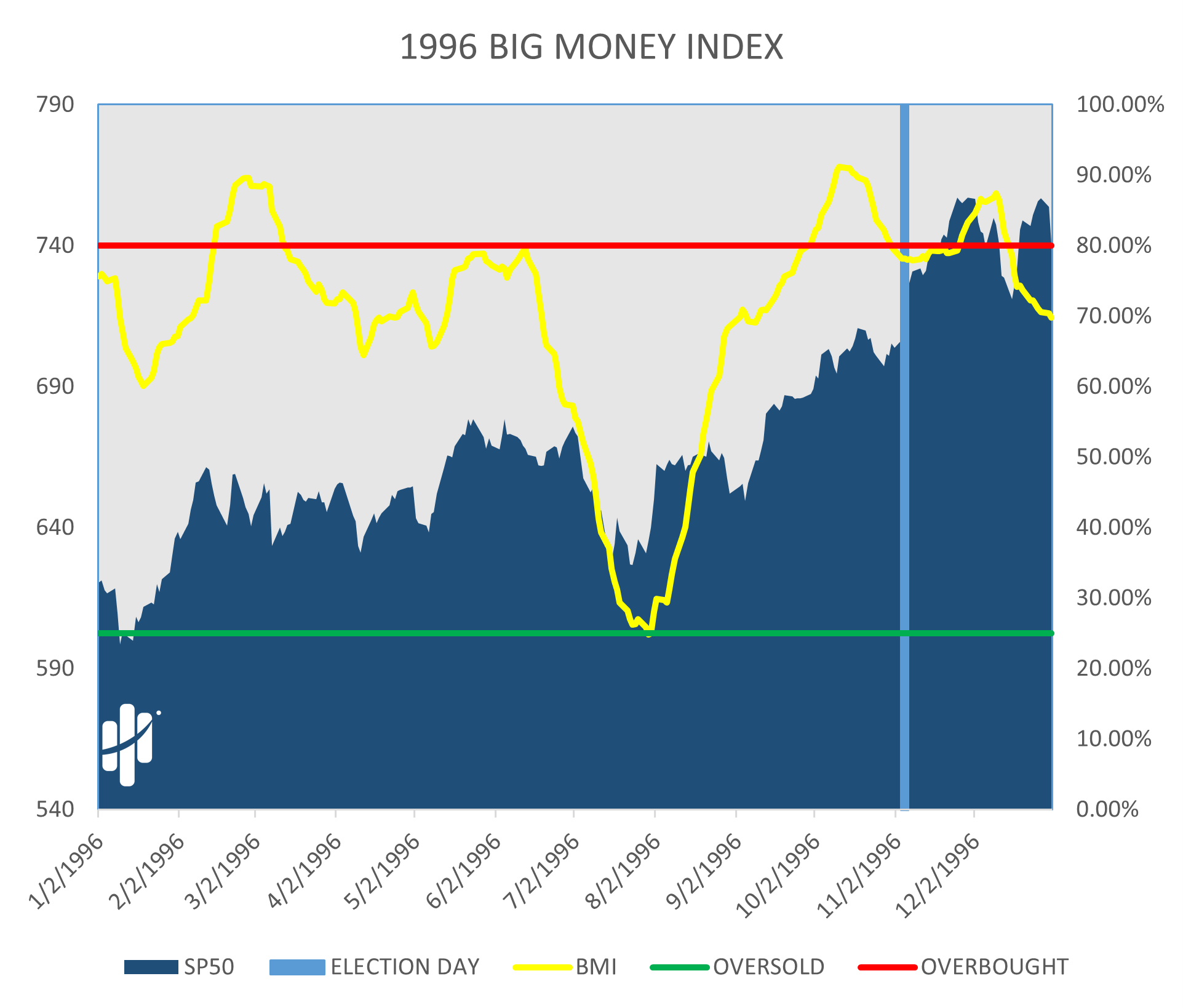
And lastly 1992:
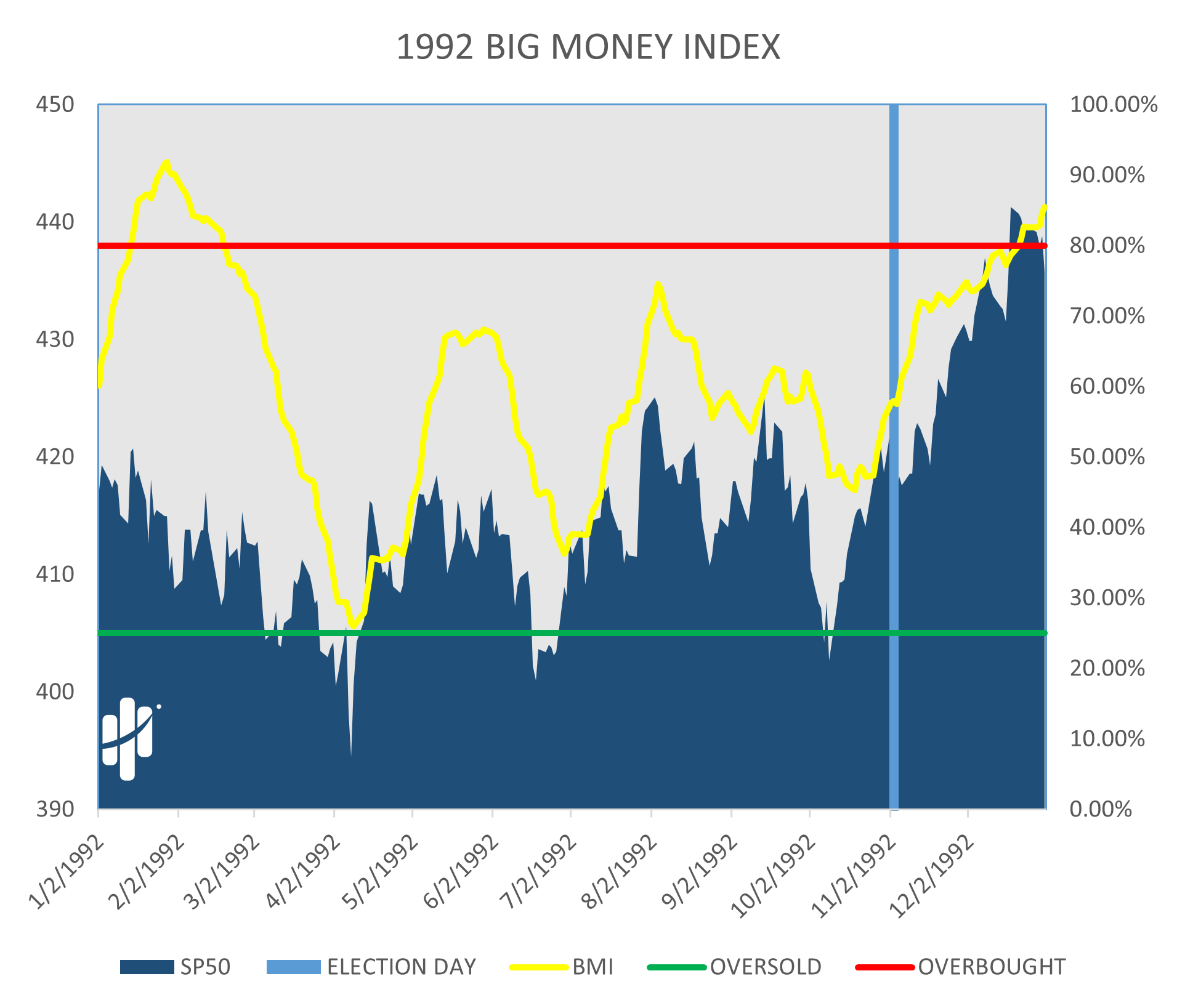
It is pretty convincing when you view everything from the standpoint of the BMI. In general, Big Money gets out of stocks heading into November elections.
It makes perfect sense too. Why is that? Big Money investors likely want to flatten out risk when uncertainty is high. Then after the winner of the election is known, they can resume investing with more confidence now that the unknown is known.
We believe that‘s happening right now. Check out the current BMI in the election trade framework:
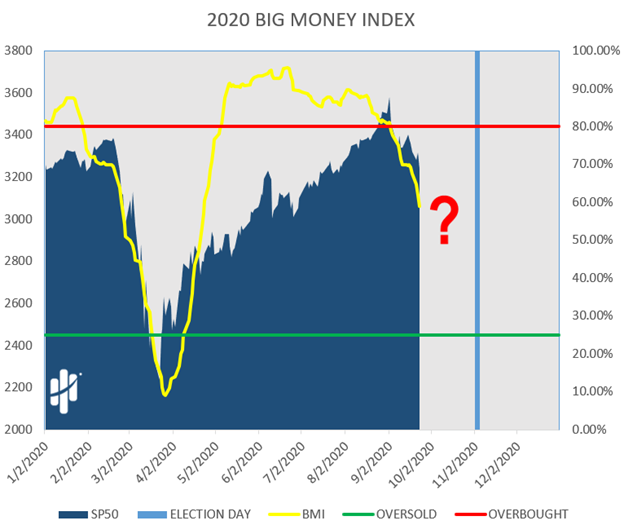
So you shouldn’t be surprised if Big Money dumps ‘em before it bumps ‘em.
Bottom line: weak Septembers are the norm. Even weaker election-year Septembers are also normal. It appears a storm is headed our way until election day.
Only time will tell, but based on a long history, the election trade is well under way.
Hopefully, this playbook helps you to relax and feel more confident heading into November.
Planning now may lead you to the eventual winner of the election…your portfolio.

